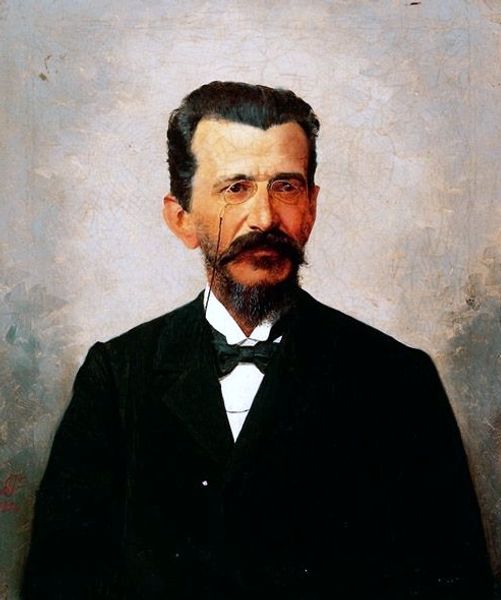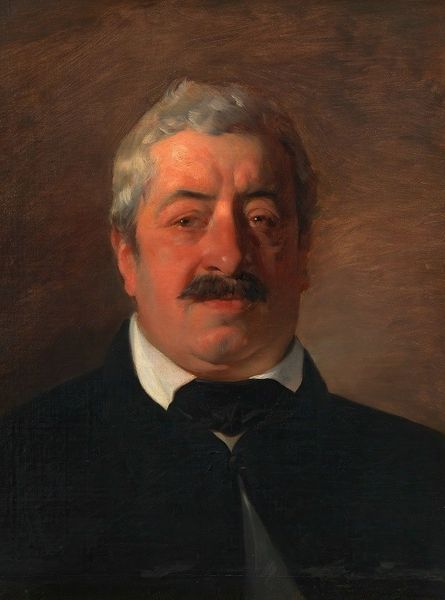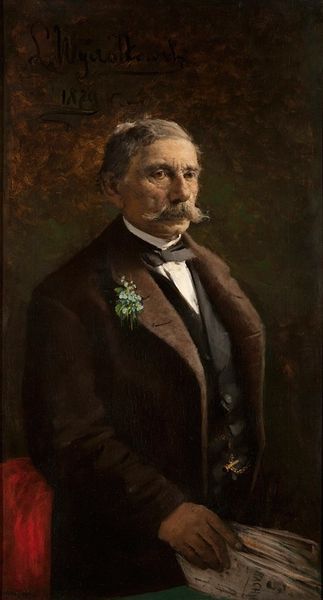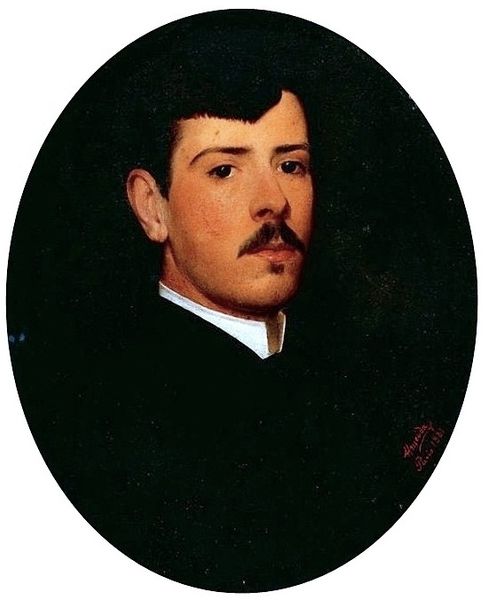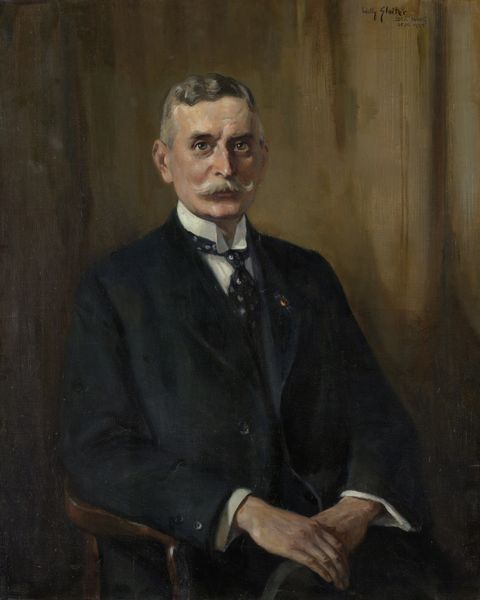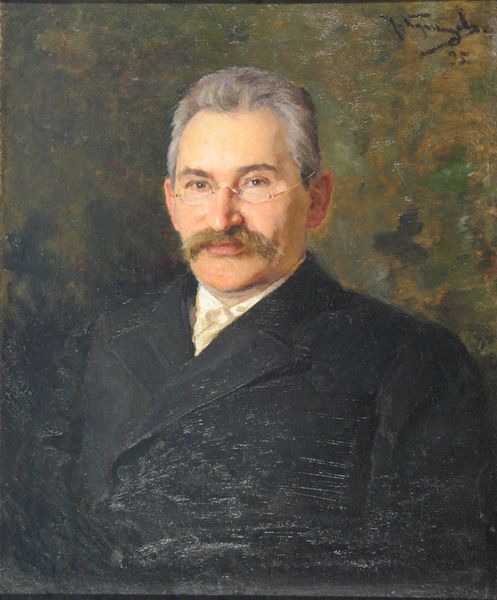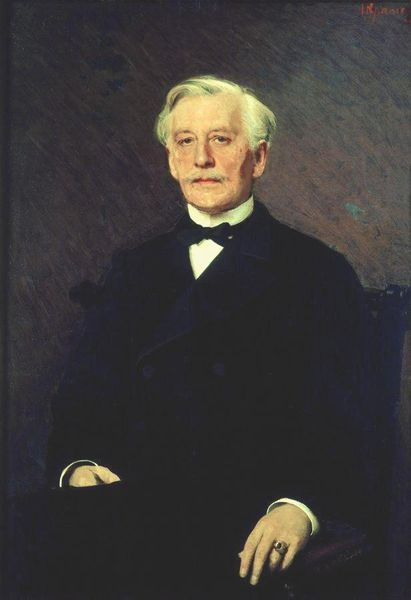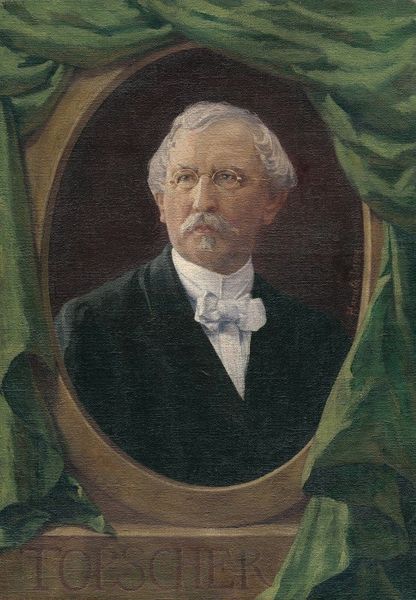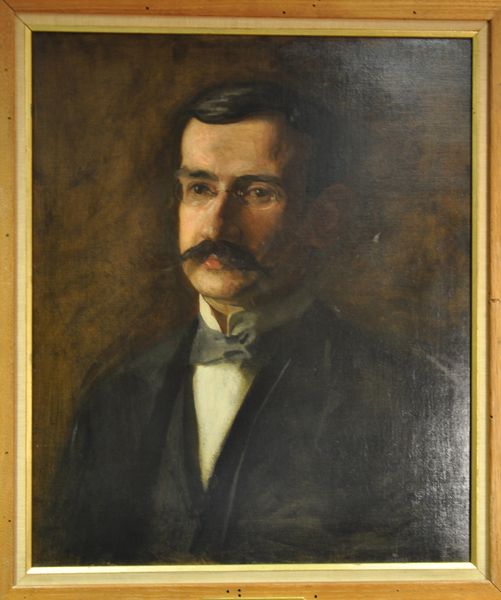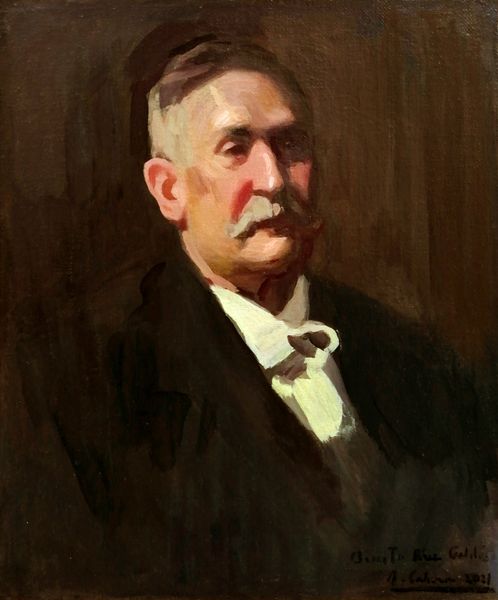
Copyright: Public domain
Jose Ferraz de Almeida Junior rendered this oil painting, "Pedro Gonçalves Dente," capturing the subject in formal attire. The black suit and bow tie, symbols of bourgeois respectability, frame the man, yet it is his face, particularly his moustache, that demands our attention. This seemingly simple facial hair carries a wealth of cultural baggage. Throughout history, the moustache has served as a potent symbol of masculinity, authority, and even rebellion. In the 19th century, it signified virility and social status, echoing earlier associations of beards with wisdom and strength, as seen in ancient philosophers and biblical figures. Observe, however, how the meanings shift. In ancient Greece, a clean-shaven face represented civilization, contrasting with the "barbarians" who bore untamed beards. Similarly, the moustache here, while signifying status, carries a hint of vanity, perhaps even a subtle challenge to traditional norms. This mirrors its appearance in later, more radical contexts. The power of such symbols lies in their ability to engage us on a visceral level, stirring deep-seated cultural memories and subconscious associations, revealing how symbols resurface, evolve, and take on new meanings across different eras.
Comments
No comments
Be the first to comment and join the conversation on the ultimate creative platform.
